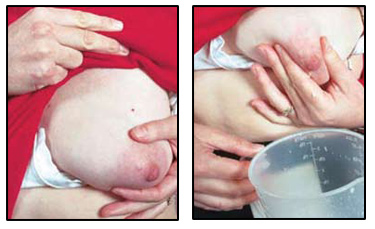In our previous publication, we talked about how new mothers can prepare themselves to uphold the important task of breastfeeding BEFORE returning to their full-time jobs. In this issue, we will give you a step-by-step guideline on how to resume that important role upon returning to work. While many presume that expressing breast milk is a difficult task, it is actually quite manageable with the right technique and motivation.
Simple but Effective
Follow these tips to help ease your experience:
- Find a comfortable, clean and private place to express milk.
- Express milk as often as you would nurse your baby during the day to maintain your milk production.
- Breastfeed your baby whenever you are together (before and after work hours), including days where you are not at work to produce consistent milk supply.
- You may leak a little at first. Breast pads help, and if possible, wear patterned clothing.
- Eat well, drink according to your thirst and get plenty of rest when possible.
- Take one day at a time. Any amount of breast milk that you can give to your baby is better than none. Be proud of your efforts!
How to Express Your Milk
There are two methods to express – by hand or by pump (hand, electric or battery operated). Regardless of the method, it is important to follow these steps before you start:
- Be hygienic. Wash your hands thoroughly, wash all containers, bottles and pump pieces with hot soapy water.
- Relax. Tension may inhibit the milk ejection reflex. Try listening to music, looking at a picture of your baby, or thinking about feeding your baby.
- Massage. Gently massage the breast, towards the areola, for a minute or two, roll your nipple between your first finger and thumb. This encourages the release of hormones which stimulate your breast to produce and release the milk.
Expressing by Hand
- Position the thumb (above the nipple) and first two fingers (below the nipple) about 1″ to 1-1/2″ from the nipple, though not necessarily at the outer edges of the areola. Use this measurement as a guide, since breasts and areolas vary in size from one woman to another. Be sure the hand forms the letter “C” and the finger pads are at 6 and 12 o’clock in line with the nipple. Note the fingers are positioned so that the milk reservoirs lie beneath them. These can often be felt as small pea-like structures underneath the skin.
- Using your thumb and index finger, gently squeeze this area – this shouldn’t hurt. It may take a minute or two before any drops appear, so do not be disheartened. Once the milk starts to flow you will no doubt pick up a natural rhythm.
- Release the pressure and then repeat continuously, building up a rhythm. Avoid sliding your fingers over the skin. Milk should start to flow. If it doesn’t, try moving your fingers slightly towards the nipple or further away. Or try a gentle breast massage.
- When the flow slows down, express from the other breast. Keep changing breasts until the milk stops or drips very slowly.
Expressing Using a Breast Pump
Most pumps work on a similar principle of creating a vacuum when the funnel has been placed over the areola. In most models, the suction strength can be altered as well. However, more powerful suction isn’t necessarily the best. Too strong a suction can damage nipples, so find the lowest effective suction rating to suit you. Milk will often not flow immediately. Make sure the funnel of the pump is not too small when the nipple is brought into the narrow part of the funnel, as this could damage the nipple.
Hand or Pump?
Whether you choose to express by hand or pump, it is still a good idea to do a bit of both as a pump only ‘sucks’ the breast but hands ‘milk’ the breast. The combination will be similar to your baby feeding.
In the final part next issue, we will share on how to store your expressed breast milk properly and to prepare them for your baby.
Author’s Note: The author is contributing this article to Positive Parenting as she is keen to provide evidence-based information to parents. However, as a baby-food company is a sponsor of Positive Parenting, the author has declined to accept any payment for this article from Positive Parenting as she is an International Board Certified Lactation Consultant and is bound by the Code of Ethics to not accept any kind of support from baby food companies.






Comments